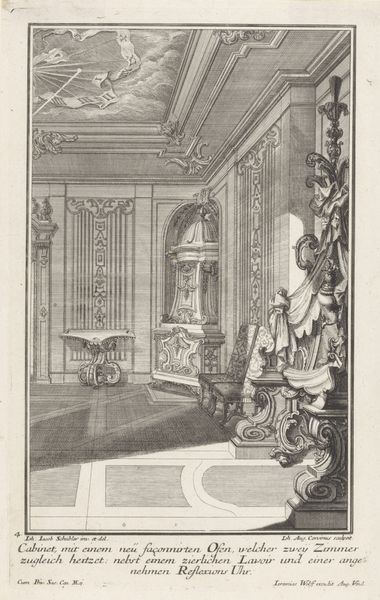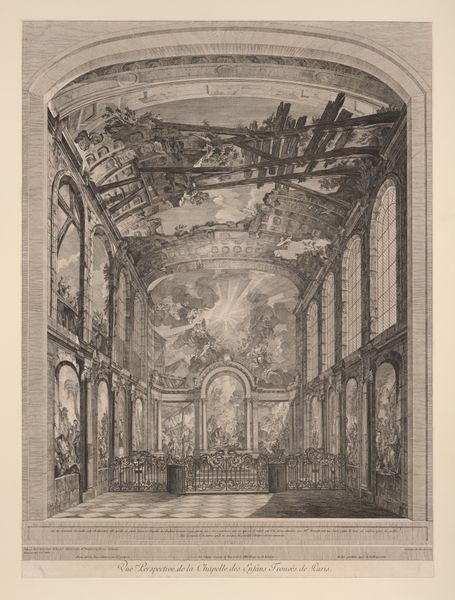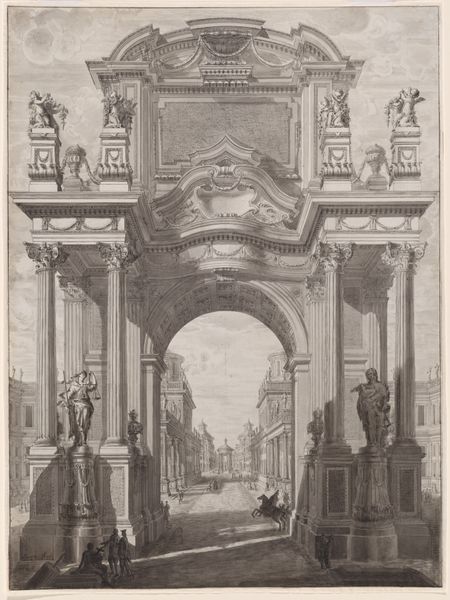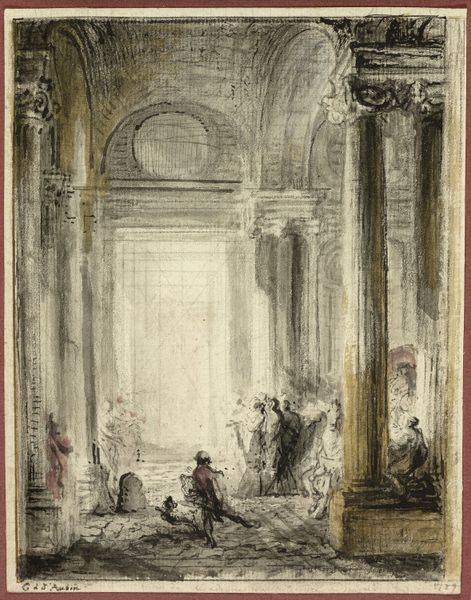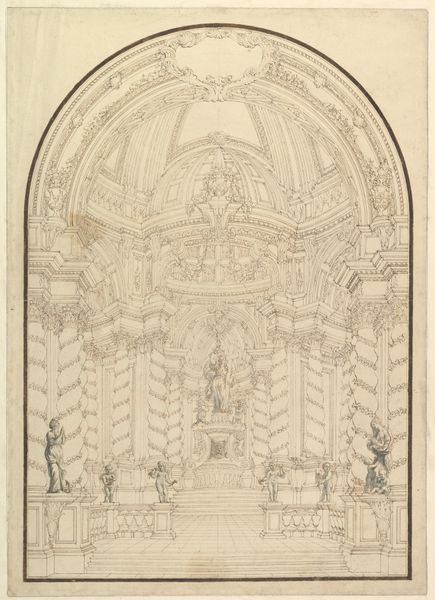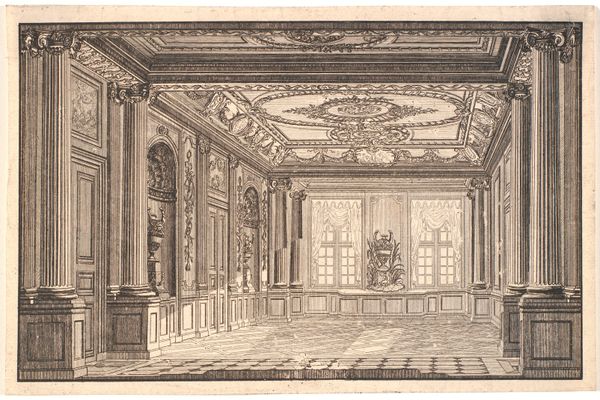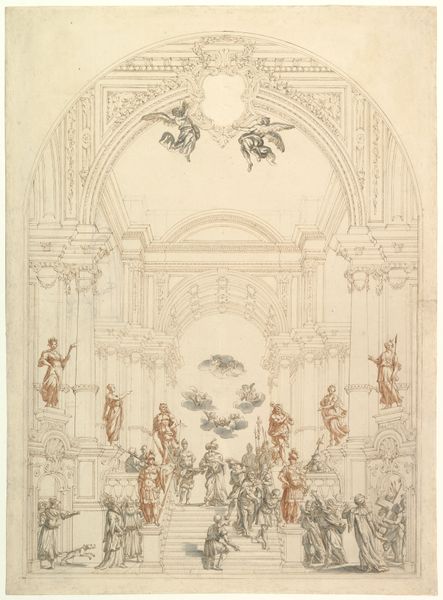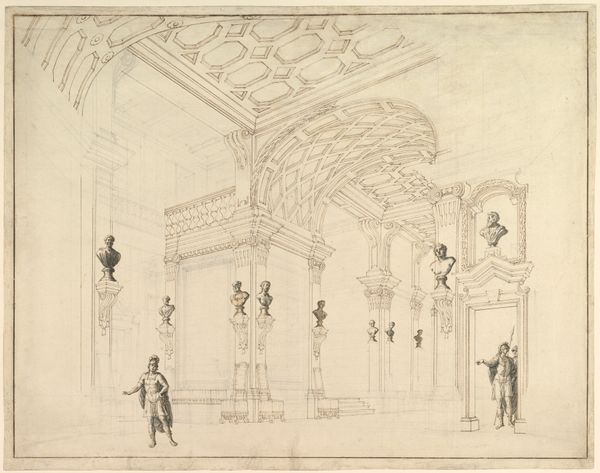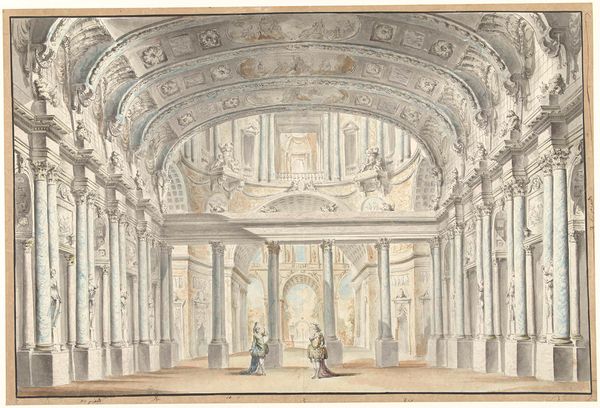
drawing, paper, ink, pen
#
drawing
#
toned paper
#
baroque
#
paper
#
ink
#
pen
#
watercolour illustration
#
academic-art
#
pencil art
Dimensions: height 233 mm, width 186 mm
Copyright: Rijks Museum: Open Domain
Curator: Here we have Gerrit Rademaker’s "De Rariteitkamer van Levinus Vincent," created with pen, ink, and watercolor on paper somewhere between 1680 and 1711. It depicts a collector's cabinet. Editor: It has this grand, theatrical feel, like a stage set, with the heavy draped curtains and the soaring architecture all rendered in muted tones. Is that the intention, do you think? Curator: Precisely. Cabinets of curiosity were, in a sense, theatres of knowledge, places where individuals like Levinus Vincent displayed their collections to assert social standing, knowledge and control over the natural world. The Baroque style underscores the drama. Editor: Look at all the allegorical figures interspersed amongst the objects and books. I’m drawn to those winged figures near the bottom, almost like mischievous cupids. Curator: Ah yes, their inclusion speaks to the psychological appeal of these collections. Think about what cabinets represented: control, but also desire, fascination, the ability to unlock secrets of the world, of nature...The cherubs play into this. Editor: But does this image romanticize these cabinets? These private collections are the root of modern museums, yes, but their formation was obviously tied to power dynamics. Curator: Indeed, the image does perhaps sanitize the acquisition process and reinforce a certain type of narrative centered around intellectual prestige. But that tension--between wonder and ownership-- is at the heart of these historical collections. Editor: So while aesthetically beautiful, it is as much a commentary on the cultural power of display as it is an exercise in architectural depiction. Curator: Yes, this rendering prompts questions about the very act of collecting and displaying and reminds us to consider historical context when engaging with images of beauty and scholarly pursuits. Editor: Ultimately, then, we're left with a depiction that inspires more questioning than admiration.
Comments
No comments
Be the first to comment and join the conversation on the ultimate creative platform.
